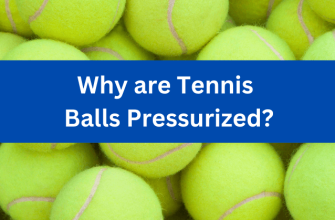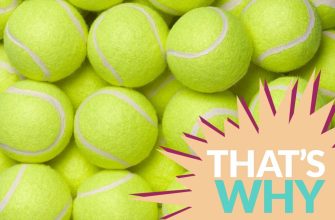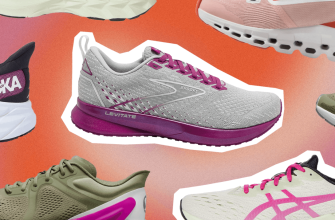Tennis shoes and running shoes are both beloved by athletes, but each serves a different purpose. Tennis shoes focus on lateral stability and quick movements, plus provide ankle support and reinforced toe caps. Running shoes prioritize cushioning and shock absorption for running motions.
Using the wrong type of shoe can cause discomfort and injuries. So, buy both if you frequently engage in these activities to maximize performance and minimize injury risk. Each shoe is tailored to its specific use, giving you the right support for your sport.
Purpose of the Comparison

The goal of this comparison is to explore the main differences between tennis and running shoes. By looking at their characteristics, use, and design, we can decide which shoe is better for certain activities.
To better understand the difference between tennis shoes and running shoes, let’s look at a table that shows their distinct features:
| Characteristics | Tennis Shoes | Running Shoes |
|---|---|---|
| Sole Design | Built for multi-directional movement | Made for forward motion |
| Traction | Provides grip on different court surfaces | Gives optimal grip on various terrains |
| Shock Absorption | Prioritizes lateral support and cushioning | Concentrates on cushioning impact forces while running |
| Toe Protection | Reinforced toe cap prevents injuries in agile movements | Offers minimal toe protection |
| Weight | Generally heavier | Generally lighter for more agility |
| Support | Delivers stability for quick side-to-side movements | Offers improved arch support |
In addition to these major differences, it’s essential to note other unique features. For instance, tennis shoes are designed with extra durable materials like reinforced outsoles and upper parts to withstand sudden stops and turns during intense tennis matches. Running shoes prioritize lightweight construction to increase speed and endurance, and reduce fatigue.
The past of these two types of athletic footwear show how they have developed based on different sporting requirements. Tennis shoes began in the late 19th century when playing tennis needed special shoes that gave grip on grass courts. On the other hand, modern running shoes started in the mid-20th century as runners wanted shoes with better shock absorption. These historical advancements have shaped the current market for both types of sport-specific shoes.
Brief Overview of Tennis Shoes

Tennis shoes, also known as trainers or athletic shoes, are designed for the sport of tennis. They have special features that help with performance and stability on court.
- The sturdy construction supports quick direction changes and lateral movements. The soles provide good grip on different court surfaces, like clay, grass, or hard courts.
- Cushioning technology absorbs shock and protects feet from impact during rallies. This reduces injuries and fatigue.
- Reinforced toe area withstands wear-and-tear from frequent stops and starts. This makes the shoes more durable.
- Mesh panels or perforations provide breathability and air circulation. This keeps feet cool and dry during long matches or training.
- Arch support helps players with a high arch maintain proper foot alignment. Some models also have additional ankle support to prevent sprains and twists.
Brands keep innovating by incorporating advanced technologies. To illustrate this, here’s a story.
A pro tennis player had trouble on clay courts because his running shoes kept slipping. He was fed up. So, he bought tennis shoes designed for clay courts. What a difference! He had better traction, quicker movements, and more stability. His game changed and he could excel on clay surfaces.
Brief Overview of Running Shoes

Running shoes are essential for athletes and runners wanting to reach top performance on the track or road. The right pair can make all the difference in terms of comfort, support, and injury prevention.
Here are three points to keep in mind:
- Design: Running shoes are crafted to cushion and support during high-impact activities like running. They carry lightweight materials, cushioned insoles, and supportive midsoles to absorb shock and decrease the risk of harm.
- Special Features: Many running shoe models have specialized features such as breathable mesh panels for improved airflow, reflective details for visibility during nighttime runs, and rugged outsoles with great traction for stability on different surfaces.
- Foot Type & Pronation: Different running shoe models fit various foot types and pronation patterns. Pronation is the natural inward roll of the foot when running or walking. Knowing your foot type and pronation can help you pick a shoe that gives the best support and stability.
Plus, most reliable brands offer a range of sizes and widths to meet different foot shapes. This means that runners can find a shoe that fits them well, making them more comfortable while running.
Interestingly, the history of running shoes goes back centuries. People used to run barefoot or wear basic leather sandals for protection. It was only in the 19th century that specialized athletic footwear began to emerge. With advancements in technology and biomechanics research, modern-day running shoes have been improved into sophisticated pieces of gear made to optimize performance while prioritizing comfort and safety.
Key Similarities Between Tennis Shoes and Running Shoes

Tennis shoes and running shoes both have qualities that make them great for physical activity.
These include:
- Versatility. They offer cushioning in the midsole to reduce shock and protect feet, decreasing the chance of injury.
- Traction. Both types of shoes provide good grip on different surfaces, vital for athletes needing quick movements and secure footing.
- Breathability. Breathable materials help keep the feet dry and cool, decreasing the risk of blisters or fungal infection.
However, there are differences between them too. Tennis shoes usually have a tougher outsole because of the sudden stops and starts that come with tennis. And running shoes have extra cushioning in the heel as runners often land heavily on that part.
So, choosing the right footwear is essential for peak performance and to avoid injury. For running, pick comfortable shoes with shock absorption to prevent shin splints. For tennis, select shoes with lateral support to stop ankle sprains. Knowing these distinctions will ensure you make the best choice for your sport.
Key Differences Between Tennis Shoes and Running Shoes

Tennis shoes and running shoes have distinct features that make them each ideal for different activities. Let’s examine the variations between the two.
| Tennis Shoes | Running Shoes | |
|---|---|---|
| Purpose | Side-to-side movements & quick changes in direction | Forward motion & repetitive strides |
| Sole | Traction on court surfaces like clay or grass | Cushioning & shock absorption |
| Upper | Extra lateral support to prevent ankle injuries | Lightweight materials for flexibility |
| Weight | Heavier due to reinforcement & stability features | Lighter for long-distance runs |
| Durability | Can handle frequent stops, starts, & high-intensity movements | Constructed for pounding on pavements or trails |
Plus, tennis shoes may have reinforced toe caps for protection against the dragging motion. Running shoes usually have reflective elements for visibility in low-light.
Don’t be afraid to invest in the right shoes that will help you reach peak performance. Select shoes that match your activity and you’ll be ready to go!
Performance Considerations for Tennis Shoes

Tennis shoes are crafted for optimal play. To make the most of your game, think about these things when picking out a pair:
- Cushioning – Quick moves and sudden stops put pressure on your feet. Get tennis shoes with cushioned soles to stop shocks and avoid foot and leg injuries.
- Traction – Firm grip is needed for fast pivots on the court. Find rubber-soled shoes that won’t let you slip when changing direction.
- Support – Tennis can cause ankle sprains. Look for shoes that provide support around the ankles, ensuring stability and reducing the chances of an injury.
Plus, some shoe designs include breathable materials and sweat-wicking tech. This keeps your feet cool and dry during play.
Remember, when selecting tennis shoes, quality matters. Pick a pair that’s comfy, durable, and supportive. Don’t miss out on your potential – make the right choice and make a statement with every match!
Performance Considerations for Running Shoes

Running shoes are designed for one thing: running. They take into account performance factors like cushioning, stability, flexibility, and traction.
Cushioning is essential. It absorbs shock and reduces the impact on feet and joints. The right amount of cushioning prevents injuries and makes running more comfortable.
Stability stops overpronation and supination. It supports arches and keeps the feet in alignment. This prevents injuries caused by excessive inward or outward rolling.
Flexibility in running shoes enables natural foot movement and promotes efficient energy transfer. It gives a more responsive feel and helps runners adapt to terrain.
Traction is important, too. It ensures secure footing on different surfaces and prevents slipping and sliding.
Choosing a shoe based on individual biomechanics, such as arch type and gait pattern, is key. A fitted shoe at a running store is invaluable.
A runner shared his experience with a high-quality pair of shoes. He noticed an immediate difference in performance during long runs. The comfort allowed him to focus on technique and push himself further.
We realize how intricate this topic can be. Each element plays an important role in maximizing potential and minimizing injuries. So when it comes to running shoes, every aspect counts.
Choosing the Right Shoe for Different Activities

Different activities call for different shoes. It is vital to choose the right one if you want to perform well and avoid injuries, be it jogging, tennis, or other sports. Consider factors like foot type, arch support needs, pronation level, and comfort when selecting the shoe. Don’t forget to try different models and brands to find the perfect fit.
Shoe technology has come a long way since ancient times. Back then, footwear was designed for protection rather than performance. But with the rise of sports and exercise routines, specialized shoes for each activity were developed. Now, choosing the right shoe is essential for a successful athletic experience.
Frequently Asked Questions
Q: What is the main difference between tennis shoes and running shoes?
A: Tennis shoes are specifically designed to provide lateral support and stability, as tennis involves quick side-to-side movements. On the other hand, running shoes are built to offer cushioning and shock absorption for repetitive forward motion.
Q: Can I use tennis shoes for running or vice versa?
A: While you can use tennis shoes for light jogging or running occasionally, it is not recommended for regular or intense running. Similarly, running shoes may not provide enough lateral support required for intense tennis play. It’s best to choose shoes designed specifically for the activity.
Q: Which type of shoes is more durable?
A: Tennis shoes are designed to withstand frequent starts, stops, and lateral movements on the court, making them generally more durable than running shoes. Running shoes are more focused on providing cushioning and may wear out faster if used for extreme lateral movements.
Q: Are tennis shoes suitable for other sports besides tennis?
A: While tennis shoes are specifically designed for tennis, they can be suitable for other sports that involve similar movements and court surfaces, such as pickleball or squash. However, for sports like basketball or soccer, shoes designed for those sports are recommended.
Q: Can I wear tennis shoes or running shoes for everyday activities?
A: Both tennis shoes and running shoes can be worn for casual everyday activities, such as walking, running errands, or light gym workouts. However, if you have specific foot conditions or require customized support, it’s advisable to consult a podiatrist for appropriate shoe recommendations.
Q: How often should I replace my tennis shoes or running shoes?
A: The lifespan of tennis shoes and running shoes depends on various factors such as frequency of use, intensity of activity, and individual gait. As a general guideline, it is recommended to replace running shoes every 300-500 miles or every 6-12 months. Tennis shoes might need replacement sooner if you frequently play on abrasive court surfaces.
Conclusion
Comparing tennis shoes and running shoes leads to a clear conclusion. Each shoe offers unique features and advantages, catering to different athletic needs.
Tennis shoes have durable outsoles and lateral support. They provide stability for balance during rallies and quick changes in direction. Plus, the cushioning helps absorb impact and provides comfort.
Running shoes are engineered for forward motion and shock absorption. They are lightweight and offer optimal cushioning and flexibility to reduce impact on joints.
Roger Federer is an example of this topic’s fascinating true history. Throughout his career, he collaborated with leading sports brands to design innovative tennis shoes. His collaboration resulted in iconic models that incorporated state-of-the-art technologies to enhance performance on any court surface.








